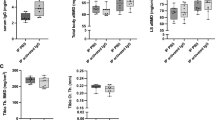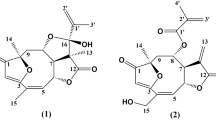Abstract
THE use of liposomes in the entrappment and administration of several therapeutic agents has been described for the treatment of cancer1 and heavy metal poisoning2, and in enzyme replacement therapy3. The advantages of a liposome drug over the use of free or polymer-bound agent are decreased toxicity and degradation, the use of smaller doses and the possibility of targeting the liposome towards a given tissue or site4. The localised administration of therapeutic agents, such as the intra-articular injection of cortisol esters in the treatment of rheumatoid arthritis5, is a situation where the use of liposomes as a means of providing a stable particulate suspension of entrapped steroid might be used to advantage. This method should reduce considerably the effective dose required to produce relief, and diminish side effects due to escape of steroid from the joint6. We report here that the treatment of an acute experimental arthritis in the rabbit with a liposome preparation containing cortisol results in a significant reduction in joint temperature and diameter, whereas treatment with an equivalent amount of cortisol alone, or with liposomes lacking cortisol, does not reduce these two parameters of inflammation.
This is a preview of subscription content, access via your institution
Access options
Subscribe to this journal
Receive 51 print issues and online access
$199.00 per year
only $3.90 per issue
Buy this article
- Purchase on Springer Link
- Instant access to full article PDF
Prices may be subject to local taxes which are calculated during checkout
Similar content being viewed by others
References
Gregoriadis, G., Swain, C. P., Willis, E. J. & Tavill, A. S. Lancet i, 1313–1314 (1974).
Rahman, Y. E., Rosenthal, M. W., Cerny, E. A. & Moretti, E. S. J. Lab. clin. Med. 83, 640–647 (1974).
Gregoriadis, G., Leathwood, P. D. & Ryman, B. FEBS Lett. 14, 95–99 (1971).
Fendler, J. H. & Romero, A. Life Sci. 20, 1109–1120 (1977).
Hollander, J. L. in Arthritis and Allied Conditions (eds Hollander, J. L. & McCarthy, D. J.) 8th edn, 517–534 (Lea and Febiger, Philadelphia, 1972).
Hess, E. V. & Coldman, J. A. in Arthritis and Allied Conditions (eds Hollander, J. L. & McCarthy, D. J.) 8th edn, 506–512 (Lea and Febiger, Philadelphia, 1972).
Page Thomas, D. P. in Bayer–Symposium VI, Experimental Models of Chronic Inflammatory Diseases (eds Glynn, L. E. & Schlumberger, H. D.) 353–365 (Springer, Berlin, 1977).
Shaw, I. H., Knight, C. G. & Dingle, J. T. Biochem. J. 158, 473–476 (1976).
Simonsson, B. Steroids 20, 23–39 (1972).
Bruni, A., Tottano, G., Leon, A. & Boararo, E. Nature 260, 331–333 (1976).
Author information
Authors and Affiliations
Rights and permissions
About this article
Cite this article
DINGLE, J., GORDON, J., HAZLEMAN, B. et al. Novel treatment for joint inflammation. Nature 271, 372–373 (1978). https://doi.org/10.1038/271372a0
Received:
Accepted:
Published:
Issue Date:
DOI: https://doi.org/10.1038/271372a0
This article is cited by
-
Kupffer cells and liver metastasis
CANCER AND METASTASIS REVIEW (1989)
-
Studies of pharmacokinetics and therapeutic effects of glucocorticoids entrapped in liposomes after intraarticular application in healthy rabbits and in rabbits with antigen-induced arthritis
Rheumatology International (1987)
-
Relationship between prolongation of antiinflammatory activity of hydrocortisone incorporated into liposomes and their lipid composition in experimental arthritis
Bulletin of Experimental Biology and Medicine (1984)
-
Dispersed lyotropic phases as carriers for active substances
Il Nuovo Cimento D (1984)
-
Cortisol palmitate liposomes: Enhanced anti-inflammatory effect in rats compared with free cortisol
Agents and Actions (1982)
Comments
By submitting a comment you agree to abide by our Terms and Community Guidelines. If you find something abusive or that does not comply with our terms or guidelines please flag it as inappropriate.



